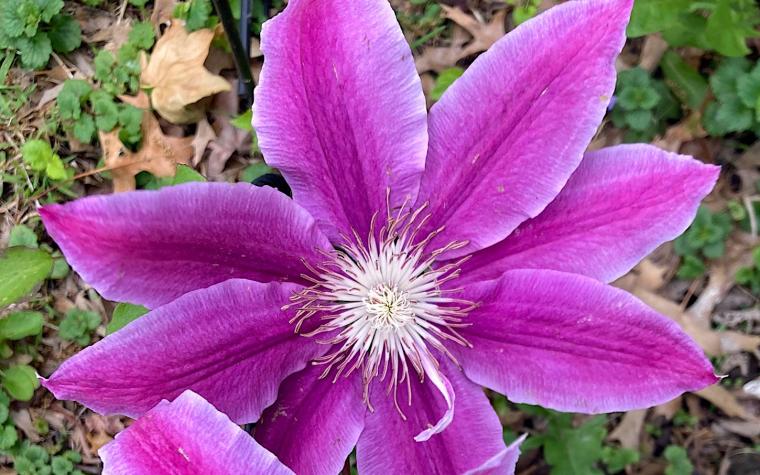ST. JOSEPH, Mo. – You can look high and low, but you likely won’t find a climbing vine that compares to the clematis, known as the “Queen of the Vines,” says Gwen Funk, University of Missouri Extension field specialist in horticulture.
Part of the buttercup family, clematis comprises several species and numerous cultivars. Color, bloom time, habitat and even growth habit vary among species. There are varieties to fit into most landscapes, Funk says.
“It is interesting to note that it is not the petals that provide the splendor of this group of plants; rather, the sepals are the flower part that attracts pollinators, birds and the human eye,” she says.
While many cultivars originated in Japan or China, a few species are native to Missouri. Vining types include virgin’s bower (Clematis virginiana) and pitcher’s leather (Clematis pitcheri), also called purple flower.
If the habitat is along a stream, water feature or wooded edge, virgin’s bower might be the better choice, she says. Virgin’s bower sports small, fragrant, star-shaped white flowers. It blooms late summer to early fall.
If the habitat is drier and more open, choose purple leather flower. Its native habitat includes prairies and dry, rocky slopes. Its bell-shaped purple flowers “nod,” facing downward to protect the sensitive reproductive parts from solar radiation and rain. It has a slightly longer blooming time, from late spring to early fall. It tolerates drought and heat. Both vines support pollinators and provide materials for nesting birds.
Fremont’s leather flower is a non-vining clematis that can add interest to a rock garden. It is a compact perennial that has nodding, purple/lavender and white bicolor flowers. It is best planted in mass along borders in a moderately dry flower bed. Expect blooms from May through June.
Looking for a pop of red to attract hummingbirds? Consider a vine that is native to southeastern Texas but widely cultivated. Scarlet leather flower (Clematis texensis) sports vivid red blooms on its herbaceous vine. While preferring a moist, part-shade habitat, this is a very drought-hardy clematis, says Funk. In good conditions, it may flower from May until the first frost in the fall.
Choices are not limited to native species. Clematis has been cultivated in gardens since the 16th century. Many hybrids have large, showy blooms and do well in Missouri gardens. Cultivars to try might include Clematis armandii, an evergreen vine with fragrant, star-shaped white blooms, or a purple clematis, “The President,” for deep color in late spring.
Regardless of type, some general growing tips apply:
• Choose well-drained soil with at least six hours of sunlight. Morning sun is better than afternoon sun.
• Shade the roots. Clematis like their roots to be cool. Use a ground cover or mulch.
• Prune according to pruning group for best display of blooms.
For more information about clematis and other showy vines, see the MU Extension publication “Selecting Landscape Plants: Ornamental Vines.”
Photo
Clematis
Clematis, a member of the buttercup family, comes in many colors and blooms at different times. Photo by Linda Geist.
